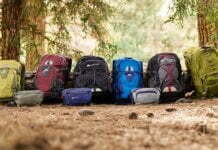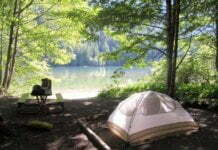Campers heading into the hills must bear in mind to shop for their food and waste in bear-evidence packing containers this summertime. Failing to do so ought to give up with an ugly go to a undergo or a different big animal. And on National Forest land at least, it could also imply an excellent. The Colville National Forest and the Coeur d’Alene Panhandle National Forest both have policies governing the right storage of meals, liquids, and different animal attractants. On the Colville National Forest, for instance, failing to store those items correctly can result in a $500 first-rate or six months in jail.

Forest Service personnel individuals aren’t trying to issue tickets, said spokeswoman Jennifer Knutson. Instead, she said in an email that “we intend to decrease the hazard of a human/undergo interplay, and teaching human beings on the way to do this is our first concern. Acceptable storage consists of: Buildings that might be secure from natural world access, difficult-sided motors, storage containers licensed with the aid of the Interagency Grizzly Bear Committee, or suspended as a minimum of 10 ft off the ground at all factors and a minimum of four toes horizontally from any vertical guide.
Attractants, including food leftovers, bacon grease, or animal entrails, should not be buried, discarded, or burned in a campfire. Instead, these objects ought to be disposed of in undergo-resistant garbage packing containers or acceptably stored and packed out. And, all harvested animal carcasses need to be close by and controlled at all times, day or night time, except the carcass, which is: At least .5 mile from any camping or snoozing vicinity or two hundred yards from a National Forest trail or acceptably stored.
Animal entrails may be left in the vicinity simplest if farther than .5 mile from tenting or sleeping areas and similar to two hundred yards of a National Forest trail. Are you planning on going camping? Great! One of the first belongings you want to do is choose a gap. Here are numerous factors you should recall when selecting a camping spot, in addition to a few guidelines for finding an awesome one.
Accessibility
How are you going to get in your tenting spot? Is it a “power-up camping spot,” or is it accessible via a footpath? If access is via a foot trail, I will relocate a gap with a 1/2 mile or less hike on your first trip. What’s at the tenting spot? Does it have appropriate perspectives? No experience going and camping in an uneventful region while numerous beautiful camping spots are to be had.








